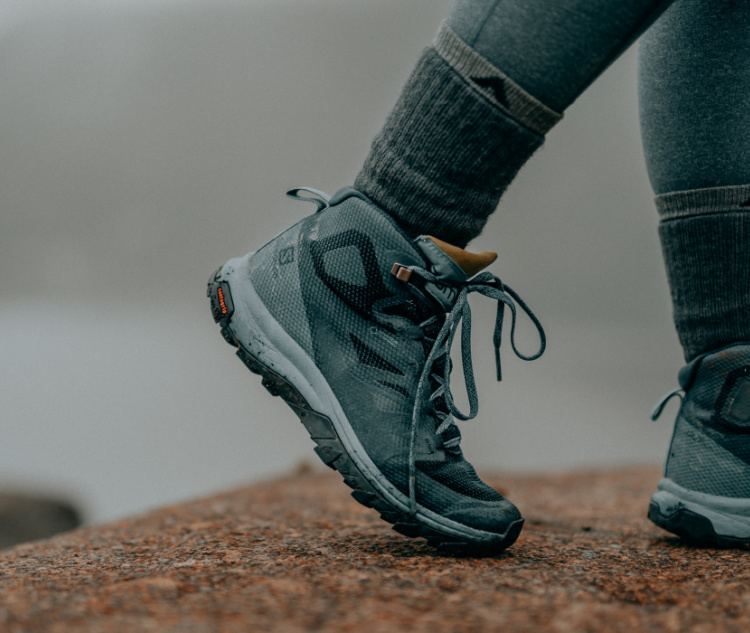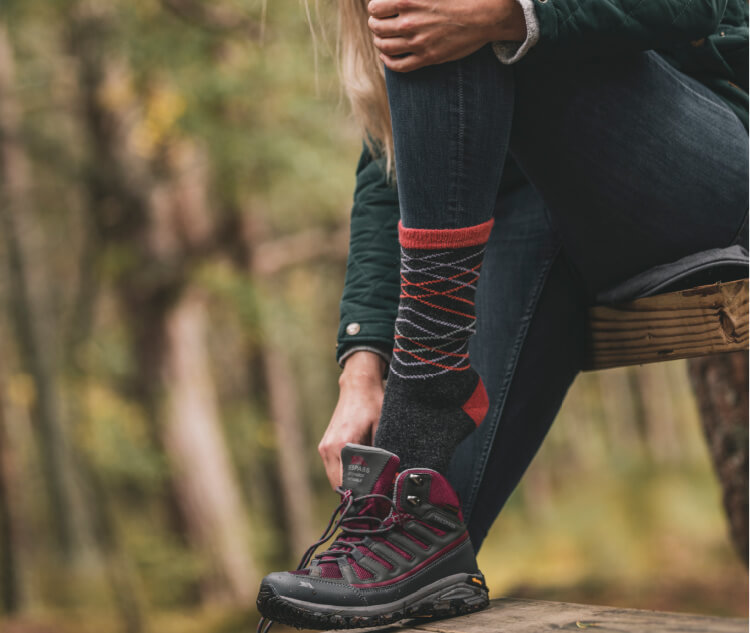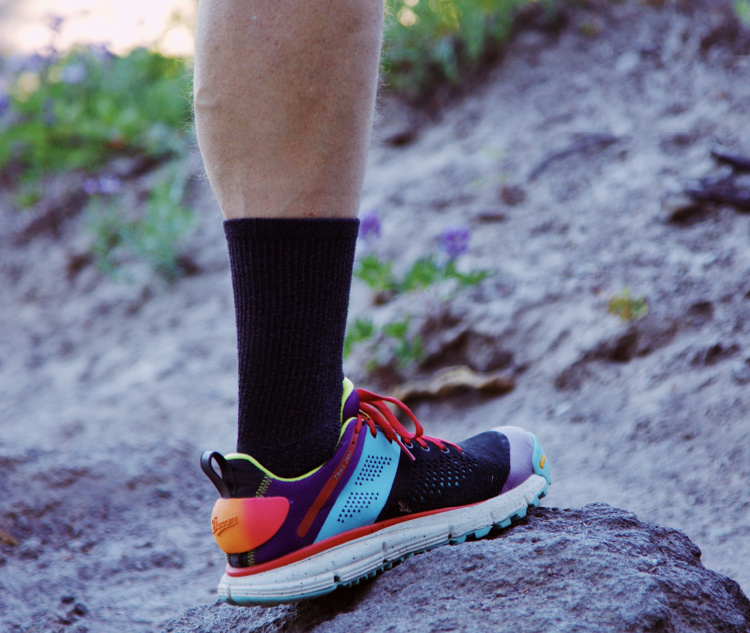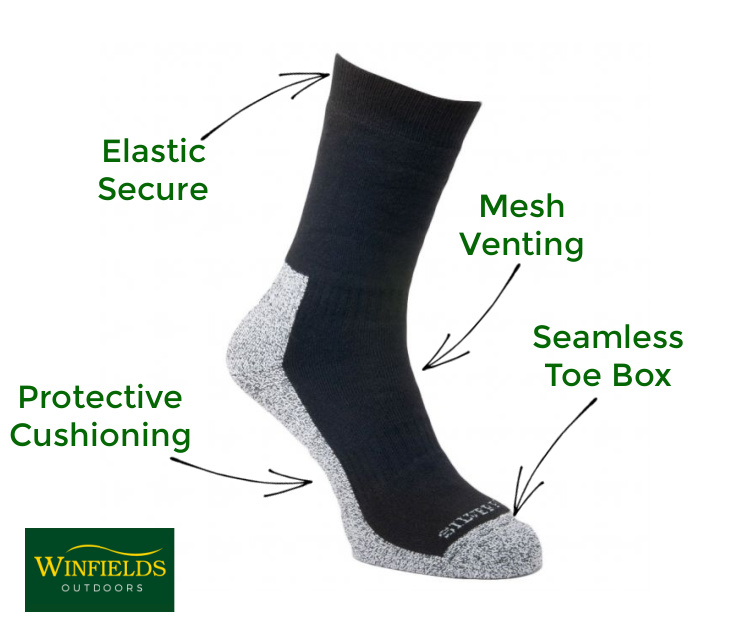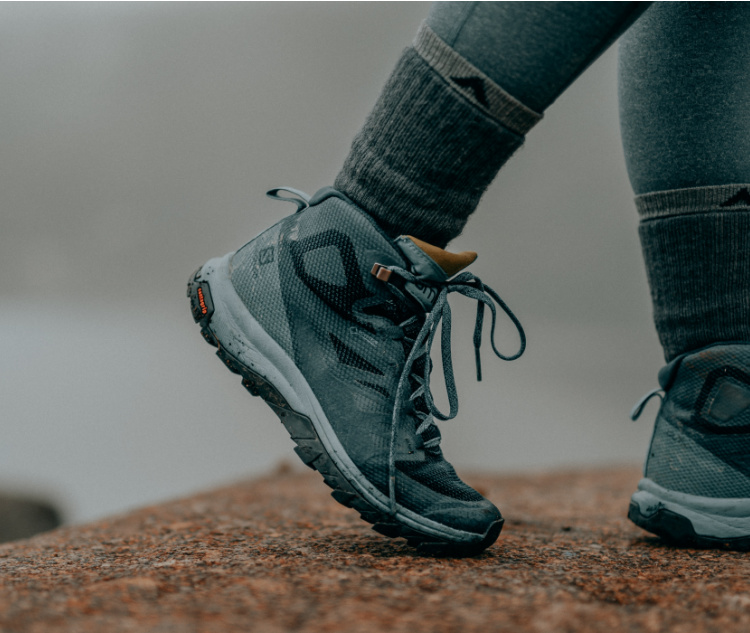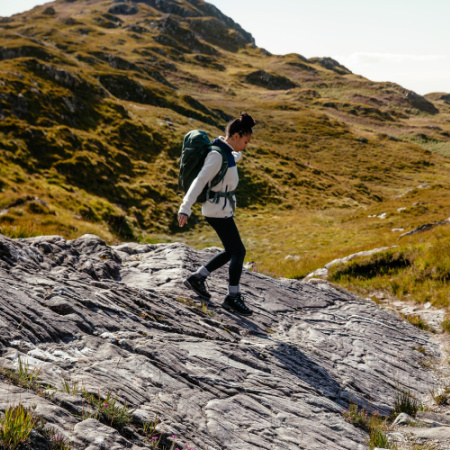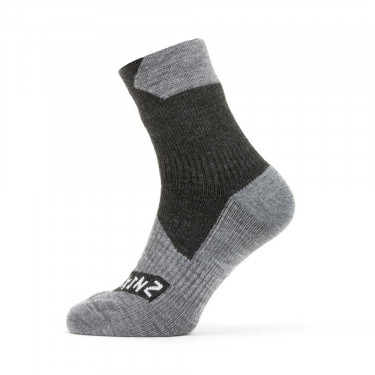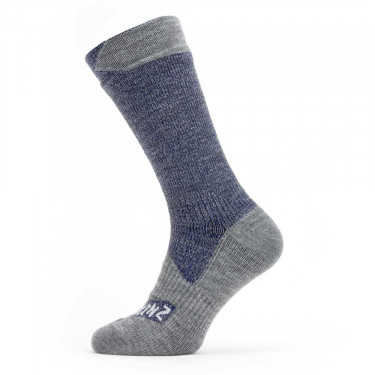Odour prevention
Ensuring your feet are comfortable is one thing, but keeping your feet in top shape also includes preventing odour. Damp, moisture and bacteria can create unpleasant odours that can affect the condition of your feet – and quickly. Odour prevention technology eliminates bacteria and wicks away moisture to keep your feet cool and comfortable.
Wicking & cooling
The best hiking socks are high wicking. This means they move moisture away from your feet to help maintain a comfortable temperature and keep them dry to prevent blisters and odour. Some socks will also be made from natural and technical fibres to allow air to circulate.
Waterproof socks
Wet weather can make any hike or day out quite miserable, no matter where you are. Avoid this by making sure you have the very best waterproof gear. An important (but often overlooked) part of waterproof layering is waterproof socks.
You can ensure your feet stay dry on any outdoor activity even if your footwear fails on you or aren’t waterproof in the first place.
What to consider when buying waterproof socks
Waterproof socks have three core elements: a knit exterior sock, a waterproof membrane, and a knit interior sock. The waterproof abilities of socks are similar to waterproof footwear, keeping your feet dry from the bottom up.
The outer and inner socks must be thick enough to protect the waterproof membrane from abrasion. So, you will find waterproof socks to be thicker than your average sports socks.
Waterproof sock construction
- Outer layer: protects the sock against abrasion and rubbing from the boot.
- Waterproof membrane: provides waterproof abilities. It also has breathable and wicking technology, allowing perspiration to pass to the outside.
- Inner layer: provides comfort and insulation. The inner layer may also wick the sweat away from your feet.
Waterproof socks should be made of breathable and waterproof materials. This is measured by a hydrostatic head. The higher the number, the better its waterproof performance.
A leader in this area, SealSkinz, uses its pioneering StretchDry technology in its products to be 100% waterproof, windproof and breathable. Other benefits associated with StretchDry technology include:
- Eliminates blistering.
- Enhanced moisture control.
- Optimum comfort.
- Prevents odour.
- Offers the perfect balance between warmth and breathability.




